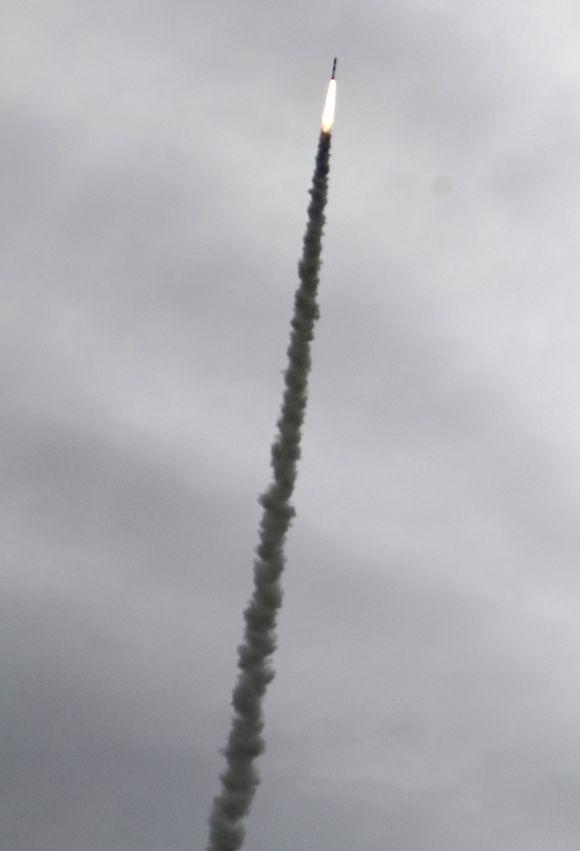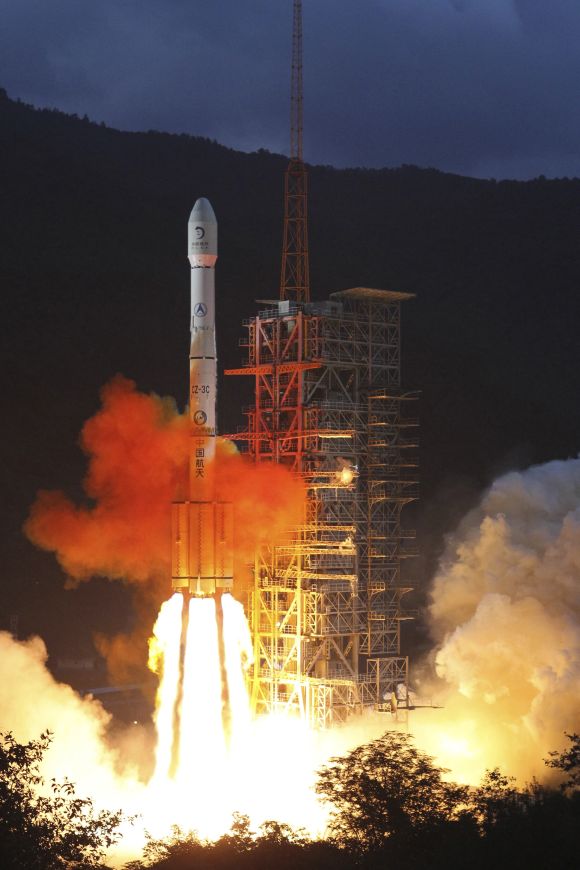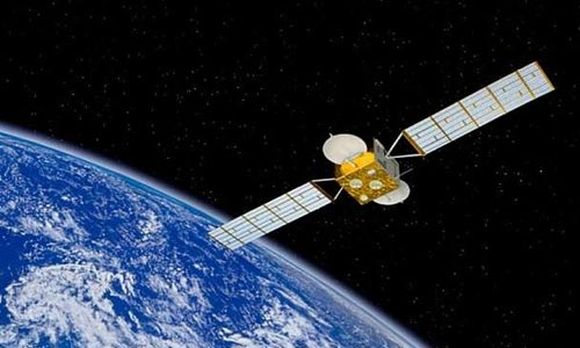Photographs: Babu/Reuters Chaitanya Giri
What hinders India's exploration program is a lackadaisical approach to space research and development by the policymakers, says Chaitanya Giri.
India stands at the crossroads of its space exploration endeavour. With a mission to Mars not far away, India now intends to join an elite group of nations that have explored planets. The Chinese mission to Mars failed last year, the Japanese have not attempted a Martian mission since many years. That leaves us with a question -- is India ready to break the ice in Asia?
India's entry into the space exploration era came inauspiciously when it was just limping back to normalcy from a lost war to China in 1962, only to be pulled back again into a war with Pakistan in 1965. There was a dire shortage of food and commodities. It was a bleak time for the country. For the first time, New Delhi felt the shortage of a great scientific endeavour, one that could pull out the nation from a vortex of hunger and suppression. In spite of such serious issues an agrarian India contemplated joining an audacious and elite space faring group of nations. The group already had two global powers, the United States and the Soviet Union, each vying for supremacy in space. India entered the race, but charted for itself a reticent and modest path.
So for all these years, India's approach to space has been pragmatic and austere. The country's leadership convinced itself that it will pursue a space program with a socio-economic strategy and would use space as a medium to enhance its technological infrastructure. The Indian Space Research Organisation (ISRO), established in 1969, did not engage itself beyond the confines of the Earth for most of its existence.
It neither had the technological competence nor a policy to justify space exploration. But in the course of pursuing its social dreams, it developed an array of communication and remote sensing satellites. These satellites have enhanced connectivity and Earth-observation capabilities in the country. Today, ISROis a world leader in the arena of remote sensing as it manages twelve Earth observation satellites, one of the largest satellite constellations in the world.
...
'India's space program has always been application oriented'
Image: This image of the Earth was taken by ISRO's Chandrayaan-1 mission while on its way to the Moon on 29 October 2008Photographs: Reuters/ESA/Cluster/Handout
The key to this successful feat has been the development of consistently successful rockets like the Polar Satellite Launch Vehicle (PSLV). It has given ISRO the much-needed confidence and endorsement from New Delhi to explore further -- and what could be a better outpost than the moon.
It has now become a norm that space agencies around the world first attempt a trip to the moon and then move on to exploring Mars. In these exploratory endeavours, an orbiter is followed by a lander probe which does some science and plants a national flag on to the surface. Planting a flag undoubtedly motivates patriotic zeal, but do we really assess the science gained from it? Does science and flag-planting go hand in hand? This is what the governments of all nations need to contemplate. They ought to consider the needs of their citizens and justify their actions.
India began its space exploration endeavours with a limited research infrastructure that included a few national laboratories and universities. It was commendable that ISRO successfully conducted its first lunar exploration mission Chandrayaan-1 with restricted resources. Chandrayaan-1, with its project cost of $90 million, proved to be a successful low-cost mission. It has imparted confidence in the scientific community of India that there are immense possibilities with designing low-cost space missions.
In the longer run though, working in such a narrow corridor will help neither exploration nor science.
India's space program has always been application oriented and research has never been a top-most priority. In the near future India plans to launch an orbiter mission Mangalyaan-1 to Mars and an orbiter-lander-rover mission Chandrayaan-2 to the moon – both expected to perform scientific tasks. These missions are conducted under the leadership of almost the same participating institutions that conducted Chandrayaan-1.
...
Difference between India and other space-faring nations
Image: Long March 3C rocket carrying China's second unmanned lunar probe Chang'e-2 lifts off from the launch pad at the Xichang Satellite Launch Center in Sichuan ProvincePhotographs: China Daily/Reuters
But there are critical issues here. The concern does not lie in the repetitive participation of laboratories; they do have the expertise and formal right. What hinders the exploration program is a lackadaisical approach to space research and development by the policymakers. New Delhi has failed to initiate a multi-disciplinary scientific approach to research and build capacities.
This is the difference between India and other space-faring nations. The United States has prioritised the exploration of Mars, evident by its numerous missions like the recent Mars Science Laboratory that studies the biogeochemistry of Mars; and the upcoming mission MAVEN that studies the Martian atmosphere, for instance. The US has been consistently studying Mars for the past forty years, and today it is the only nation to have successfully travelled to Mars.
China has prioritised its Chang'e lunar program that includes an orbiter, a lander, and a sample return mission. Such a program profile gives China the entire spectrum of knowledge to carry out manned exploratory missions to moon. Japan with its Hayabusa missions and the European Space Agency's Giotto and Rosetta missions have enabled them to explore asteroids and comets. This will be of particular importance in the future when asteroids and comets will be mined for resources. These leading space agencies today are involved in developing multi-disciplinary capabilities. Such initiatives garner them with technical solutions that are usually not yielded in a mono-dimensional approach like that of India.
...
'Future is not just time-bound but also technology-bound'
The Department of Space, which reports directly to the Prime Minister of India, must recognise the stagnancy and myopia in India's space exploration program and come up with a long-term vision. India must urgently create dedicated establishments that will supervise the exploration program. These institutions will oversee the designing and planning of multi-disciplinary missions, develop a wide range of instruments and augment the existing skilled workforce. India must also develop mechanisms to create spin-off technologies from space research.
These have wide industrial potential whose development will serve the agency's original goal of creating socio-economic benefit from space science. In order to achieve these realistic goals, New Delhi will have to closely monitor the recent developments in space exploration and forecast its global position in space exploration. It ought to make greater investments in space research and differentiate it from the production and commercial arms of ISRO. Such a differentiation will develop a research environment that will bring skilled personnel from all over the world.
New Delhi should know that space is not a mere formality but a strategic imperative, and that it must immediately disconnect science from the usual hypocritical austerity. A flight to the moon or Mars is an achievement only if it results in a lucrative scientific discovery.
The future is not just time-bound but also technology-bound; any nation that has the capability to utilize its resources for technological progress leaps decades into the future. India can no longer afford to live in a space time-warp.
Chaitanya Giri is a Doctoral Researcher at the Max Planck Institute for Solar System Research and a contributor to Gateway House: Indian Council on Global Relations.
Courtesy: Gateway House





article